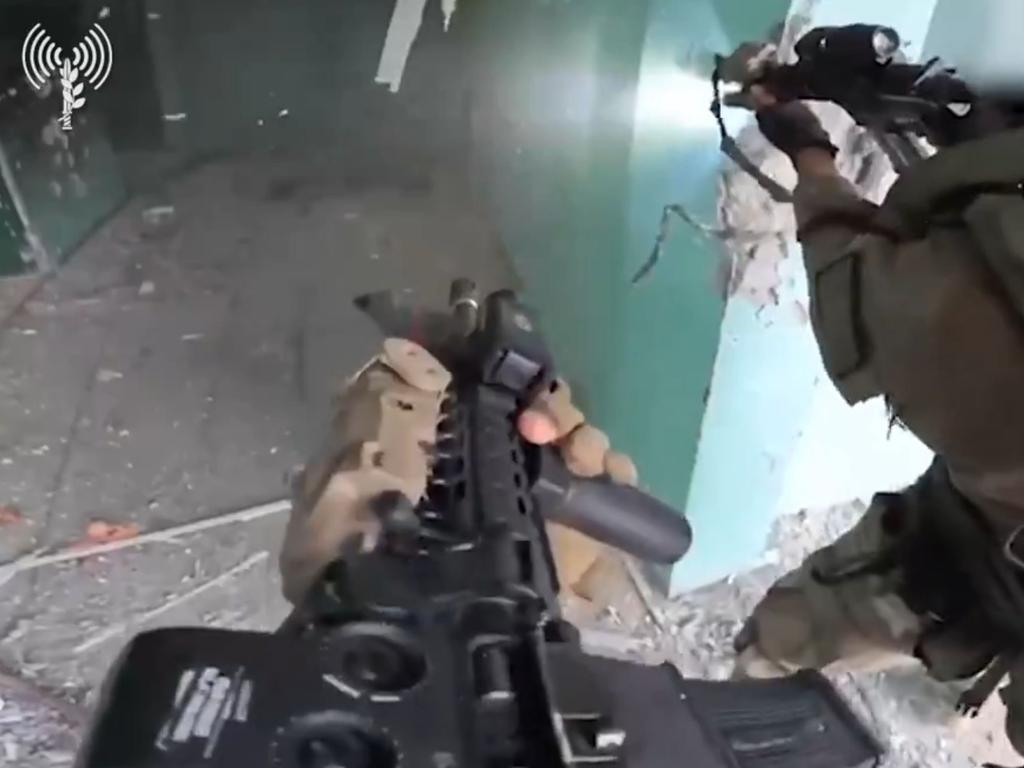Israeli military reveals tunnel it says Hamas built for big attack
The tunnel is big enough for vehicles to drive through it, and yet, until recently, Israel had no idea the tunnel came within 400m of its border with northern Gaza | WATCH
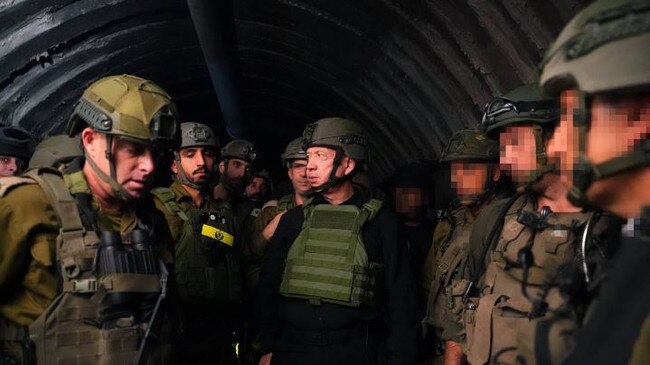
About 400 metres from a civilian border crossing between Israel and northern Gaza lies what Israel’s military says is the largest tunnel discovered in the enclave.
It is large enough that large vehicles can drive through it, and yet, until recently, Israel didn’t know the tunnel reached right up to its border.
Israeli troops uncovered the tunnel exit buried under a sand dune a few weeks ago. Israeli officials believe that up to 50m deep at points, and four kilometres long, it took years and millions of dollars to build, and was meant to facilitate a large-scale attack on Israel.
“This is for moving massive assets,” Israeli military spokesman Lt. Col. Richard Hecht told reporters on Sunday. “It’s strategic.”
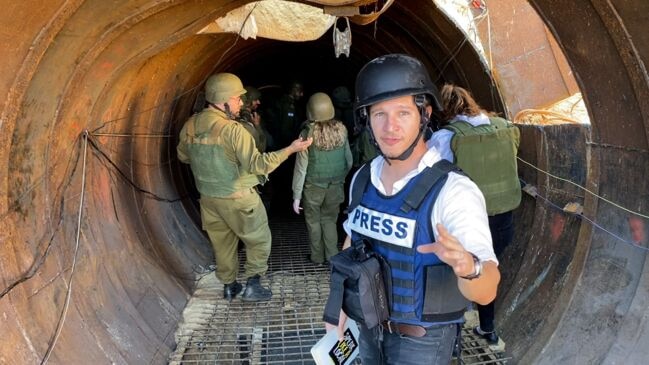
The discovery of the large tunnel near the Israeli border provides further insight into how much Hamas has invested into its tunnel program and how little Israel knew about it before the group’s October 7 attack.
Analysts say this large tunnel demonstrates how Hamas has improved its subterranean warfare over the years and raises questions about how many other tunnels of that size are located near Israel without the military being aware of them.
Israeli military spokesman Daniel Hagari called the large tunnel “Sinwar’s secret”, a reference to Hamas leader Yahya Sinwar, and his brother Mohammad Sinwar, who Israeli officials say headed the tunnel building project.
Representatives of Hamas didn’t respond to questions about the group’s tunnel network.
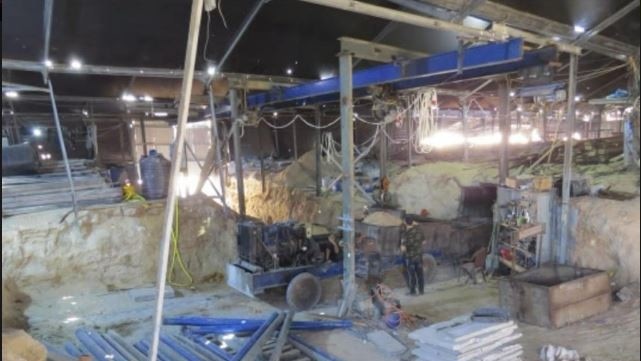
“Hamas has the most extensive and most sophisticated tunnel network ever encountered in warfare,” said Daphné Richemond-Barak, professor at Israel’s Reichman University and author of a book on underground combat.
The Israeli military took a group of reporters, including from The Wall Street Journal, into the tunnel on Friday. Journalists were able to enter only the first approximately 50 metres of the tunnel, a limitation that the Israeli military said was for their safety.
In one video shown to journalists by the Israeli military, Mohammad Sinwar can be seen driving a car through what they say is the tunnel.
The video also shows Hamas using a large tunnel drilling machine that has allowed it to expand the size and quality of their tunnel building.
Israeli military officials say their war to destroy Hamas’s military capabilities won’t be finished until the group’s tunnel network has been eliminated.
That process, which officials say will take time, could put Israel at odds with international demands to wrap up its war in Gaza as the civilian death toll continues to mount.
“Without demolishing the tunnel project of Hamas, we cannot demolish Hamas,” said Israeli military spokesman Rear Adm. Daniel Hagari in a briefing to reporters.
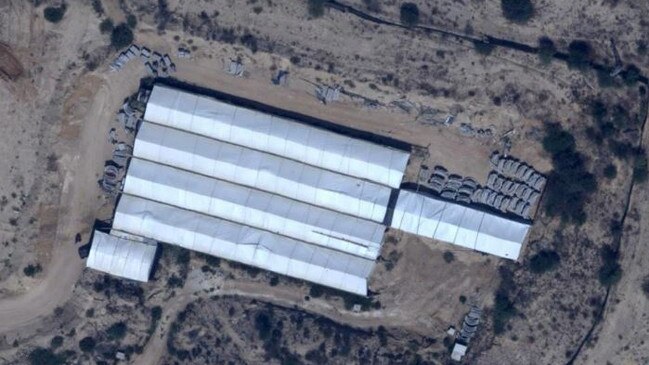
There are hundreds of kilometres of underground tunnels in Gaza, Israeli officials say. Some, like the one found near the Israeli border, are meant to facilitate cross-border or attacks within Gaza. Israeli officials say they have located and are in the process of destroying dozens of such tunnels.
While some of Hamas’s tunnels are barely wide and tall enough for one person to move through crouched down, Israeli officials say this tunnel, near the Erez border crossing and adjacent Israeli military base, is a key part of Hamas’s infrastructure.
The tunnel’s reinforced cement walls are lined with electrical wiring, making it not just a passageway, but a living space where Hamas fighters can stay underground for a long period.
Israel’s military said the tunnel has ventilation and sewage systems, bathrooms, blast doors to prevent entry, multiple branches, communication networks and weapons stored inside.
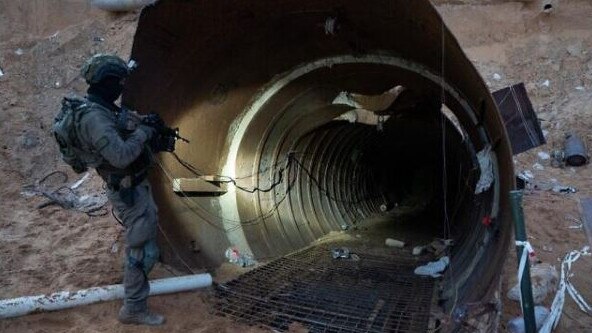
Despite battling Hamas’s tunnel network for two decades, including after the October 7 attack, Israel was unaware that such a massive tunnel was located on its border and near the Erez crossing and a military base.
The Erez crossing – now closed – was used by Gaza’s civilians to move in and out of Israel for work, medical treatment or travel abroad, among other purposes.
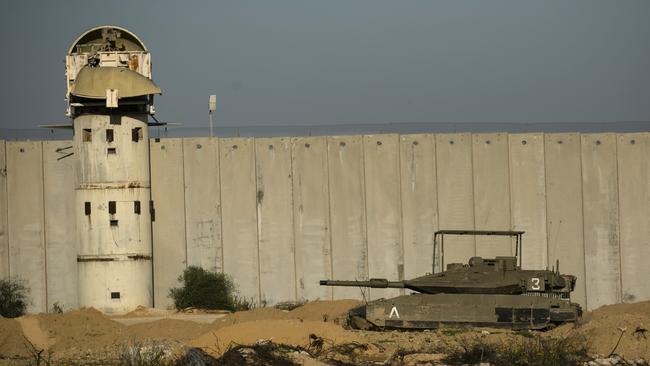
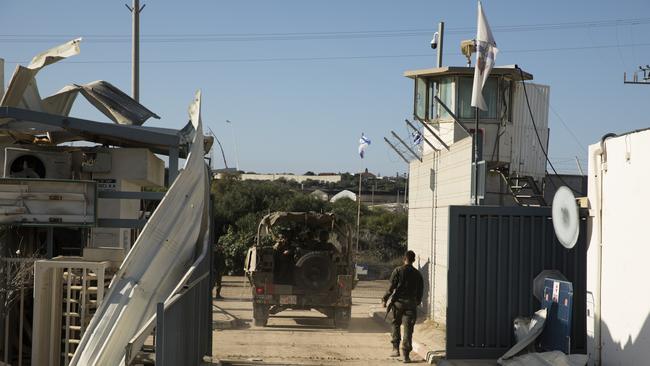
The Hamas militants who attacked the civilian crossing and adjacent military base on October 7 drove motorcycles, pick-up trucks and tractors to demolish the protective fencing.
The Israeli military said some part of the large tunnel was likely used to help in that attack, but they believe the part that extends to the Israeli border was being saved for a later date.
North Gaza is just a five-minute drive from the base across the sand dunes of Gaza, and militants attacked early in the morning and on a Jewish holiday, when the base had fewer soldiers at hand.
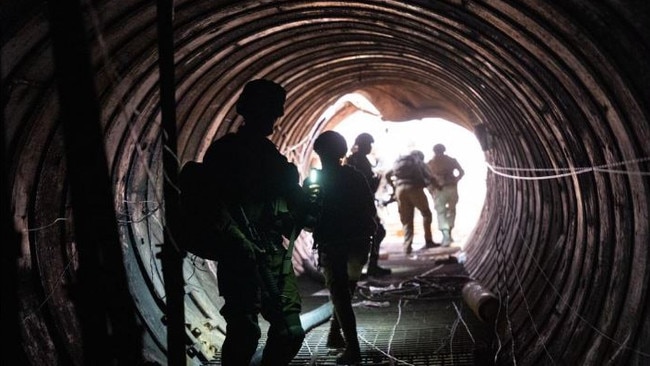
Hamas started its tunnel program with crude small passageways reinforced with wooden planks. Over the years, the group has built tunnels reinforced with concrete that vehicles can pass through, similar to those built by North Korea into South Korea, said Richemond-Barak.
In 2014, after Israel discovered Hamas had built dozens of passageways from Gaza into Israel, it built an underground barrier and invested in a system to detect tunnel digging called “the Obstacle”.
But Hamas also has a vast network located within the enclave, and tunnels on its border with Egypt for smuggling weapons and a potential route for senior militants to flee Gaza’s battlefield.
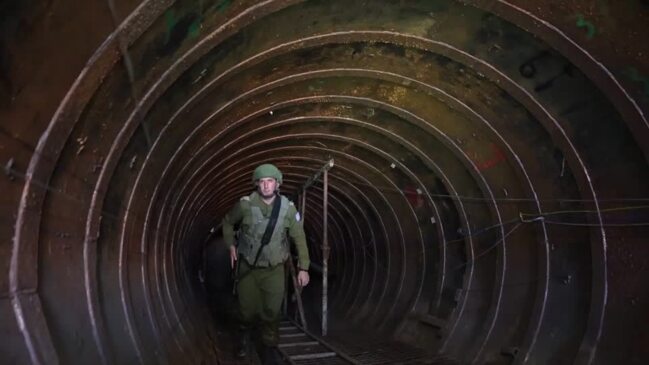
Hamas has dug tunnels that include underground bases, living quarters, and weapons depots throughout Gaza’s urban landscape.
The group’s militants use those tunnels to battle Israeli soldiers by popping out and mounting a quick attack, such as firing an RPG (rocket-propelled grenade) at an Israeli tank, and rushing back into the underground system.
Israeli soldiers say they have found tunnel shafts in grocery shops and schools, and in or near hospital complexes, universities, private homes and even a graveyard. The tunnels’ locations make it a challenge to destroy them without harming Gaza’s civilian population.
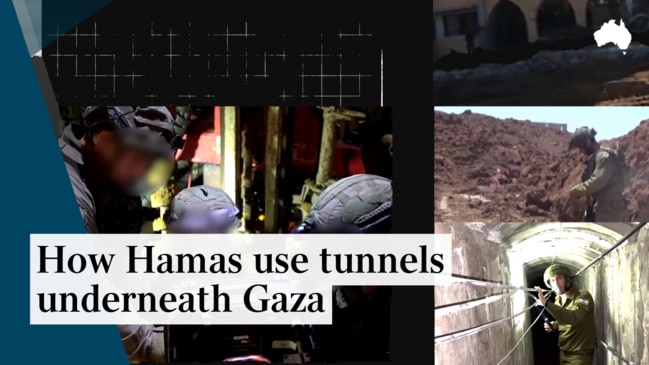
Israeli troops have located at least 800 tunnel exits since the current war began, but the military says the majority of the network remains undiscovered. Military analysts say a variety of techniques will be needed to destroy or damage the underground system.
The Israeli military has attacked the underground network with air strikes and filled them with liquid explosives, and has also begun flooding some tunnels with seawater. Before sending in soldiers, it explores the tunnels using robots, dogs and drones.
Dealing with the tunnels has been one of the deadlier tasks for Israeli soldiers.
Earlier this month, Gal Eizenkot, son of Gadi Eizenkot, a former Israeli military chief and one of five members in Israel’s war cabinet, was killed by a booby trap at the entrance to a tunnel shaft.
The Wall Street Journal


